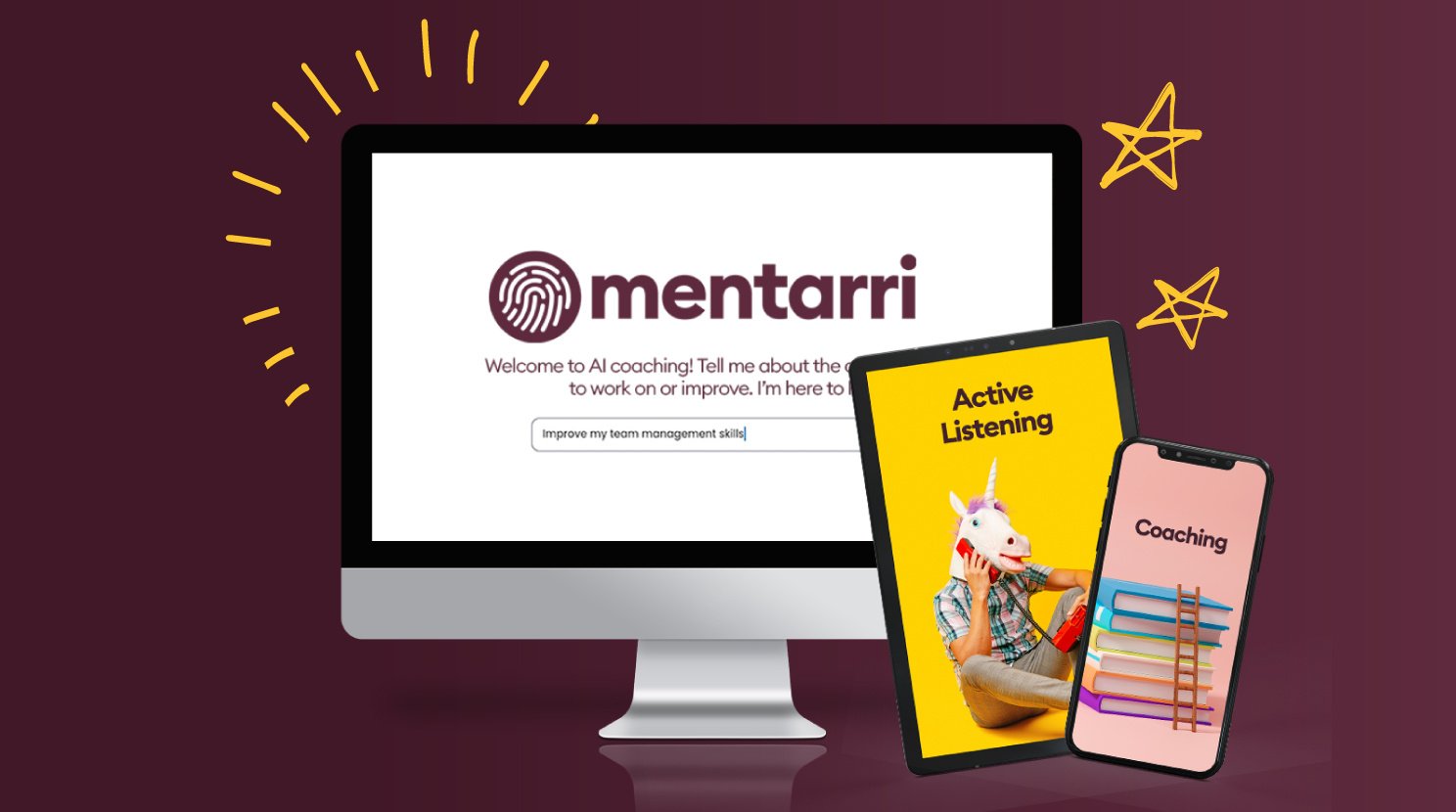Rather than focusing on tools for optimisation, should businesses be looking more creatively to the future?
Efficiency, optimisation, lean working. However we describe it, we can all recognise the well-established concept of working efficiently, being part of that well-oiled machine that’s doing the most it can with the minimum resource. And, when times are tough, as the austerity of recent years has shown, operating efficiently can assume an even greater importance.
Organisations have certainly been under pressure to achieve more with less in recent years. At the same time, workplaces have, in many ways, become more complex. Gone are the days of a dedicated workforce, on site from 9am till 5pm each day, labouring at a job for life. Instead, welcome to the world of flexible and remote working, fixed-term contracts and contractors, work-life balance and job hopping. Workplace cultures are unrecognisable, with an ever-increasing emphasis on diversity and inclusion (D&I), meaningful work and workplace wellbeing.
It’s no surprise, then, that HR directors have embraced tools and techniques that enable them to manage this complexity as efficiently as possible. Policies and rulebooks abound in an effort to manage risk and influence workplace behaviours. Swathes of HR tech are deployed to automate and streamline traditional HR functions. Tech companies promote services that claim to enhance not only productivity and performance, but employee engagement and retention. There seems to be no limit to the potential offered by rule-bound and data-driven solutions to attract, monitor, manage and retain an organisation’s human capital.
But does this obsession with optimising efficiency come at a price? Criticism of business efficiency has a long history. Victorian polymath John Ruskin famously believed that ‘impersonal’ efficiency threatened to strip labour of its meaning. In an age of seemingly unbridled technological change, he championed instead the importance of meaning as a motivator.
Sound familiar? More than a century later, we need to ask ourselves whether the drive towards efficiency in how we manage people at work is in danger of creating unintended consequences; and at a time when our colleagues are increasingly looking for their own meaning and purpose at work, and when we need to create work cultures fit for the challenges of change and disruption.
The 'innovator's dilemma'
At an organisational level, these challenges are akin to Clayton Christensen’s famous ‘innovator’s dilemma’: how to manage the day to day while also innovating for the future. It’s a tricky balance at the heart of all organisational strategy and culture, with HR teams often at the chalk face when it comes to enabling cultures, structures and processes that facilitate both.
In a 2004 Harvard Business Review article, Charles A. O’Reilly and Michael L. Tushman introduced the concept of the ‘ambidextrous’ organisation; businesses successful at both “exploiting the present and exploring the future”. Crucially, their research showed that, while ambidexterity assumed separate, forward-looking business units unencumbered by the demands of business as usual, the key to success was ambidextrous senior teams and managers able to lead and co-ordinate across organisations, “combining the attributes of rigorous cost cutters and free-thinking entrepreneurs while maintaining the objectivity required to make difficult trade-offs”.
It’s still all about the people. The question is: how to create ambidextrous organisations driven by ambidextrous leaders.
Rules and regulations — the dangers of a risk-based managerial approach
Even the most entrepreneurial-minded organisations need some rules to provide a framework for getting things done and, crucially clear guidelines for how employees will be treated, and treat each other. And it’s certainly tempting, in a time of change and complexity, to try to codify the behaviours we want to see from the people in our organisations. It’s both prudent and efficient, showing that an organisation is alert to risk and able to communicate expectations clearly, right?
Take, for example, the proliferation of policies which attempt to manage employees’ use of social media at work, or to ensure they dress appropriately. Creating and implementing these policies and processes usually sits with HR, which can easily find itself presiding over spiralling employee handbooks that try to cover every eventuality and minimise every risk.
The danger is that this risk-based approach to management can backfire, fuelling disengagement, stifling individual responsibility and reinforcing behaviours those policies were designed to address. And do we really want leaders spending valuable time enforcing complex policies when, in many cases, a healthy dose of common sense might do the trick?
This is the approach taken by General Motors’ CEO, Mary Barra, who has gone on record as having a management philosophy epitomised by their two-word dress code: “dress appropriately”. This is a touchstone for her, a small but meaningful example of empowering managers to step up and take responsibility. For Barra, the danger of overly prescriptive policies and procedures is that people will live down to them. Better, perhaps, to set the right expectations and guidelines and expect people to live up to them.
Trust your people, not your policies
In a 2017 Harvard Business Review article, Sue Bingham argues that strict policies are often excuses to not think, leading to clashes between common sense and bureaucracy.
This rule-enforcement approach does nothing to support the kind of enabling organisational cultures to which we all aspire: “When you spend time thinking up rules to stop every conceivable bad behaviour, it’s easy to forget to rely on the people around you. Take your faith out of policies, and place it in the people you hired to grow your company into a thriving business,” says Bingham.
Nick Cowley, director of The Oxford Group and author of the book, 5 Conversations, agrees. For him, the key building block for performance management and engagement is trust. He gives the example of an organisation that has, Mary Barra style, boiled down its core leadership competencies to a few simple principles. “After that, it’s up to individual leaders and managers to interpret those values and to find the sweet spot between direction and giving people freedom to operate, to experiment and sometimes fail,” he says. “They need the courage to accept that they can’t – and shouldn’t try to – control everything.”
Cowley’s work has reinforced his view that there’s no substitute for keeping the human element at the heart of business. Take performance management: “Too often, performance management is focused on the lowest common denominator of tackling under-performance; it’s all about the process,” he says. I’d argue that, instead, it needs to focus on the spirit of what organisations are trying to achieve: having conversations with people that focus on purpose and contribution. Investing in the time it takes for trust-building conversations is an investment worth making. It’ll save time down the line.”
Courage is an interesting word here. It’s not easy to throw out rulebooks and trust instead to all-too fallible humans. But, to quote Sue Bingham again, “policies are a company’s message to its employees regarding how it values people”. If we want to build cultures that value initiative, build judgement and encourage problem solving, to offer Ruskin’s ‘meaning’ at work and to develop our own and others’ ‘ambidexterity’, we may have no other option.
Accepting HR tech can take some work off your plate, allowing more time for personal interactions
So, what of that other great efficiency-driver in HR today: technology. Artificial intelligence (AI)-based recruitment solutions are only the tip of a very large HR tech iceberg; chatbot-based coaching, anyone?
The common factor in much of this new dawn is the ability to collect, use and analyse data to support everything from tracking retention rates and basic performance management to (supposedly) taking the bias out of recruitment and better employee wellbeing. If tech can help HR teams with the grunt-work that threatens to tie them down and improve process and people outcomes, bring it on.
For Nadia Hutchinson, global HR operations director at Kantar, the genie is well and truly out of the bottle – and that’s no bad thing. Her organisation has its own digital HR team, custodians of data-based solutions that are driving not just efficiencies but service improvements, especially, for her, around global and regional compliance and risk management.
“We all need to be alert to the tremendous changes in the world of work, whether in the personal tech we use — who uses a BlackBerry these days? — or structural changes around job automation and robotics,” she argues. “We need to evolve and accept that the pace of tech change at work is no different to the changing tech in our personal lives.”
She is also bullish about the levels of service she and her colleagues still provide: “While our roles are changing, HR will always be there to advise senior leaders, for talent management and a whole host of personal interactions, even if some staff requests are now routed through a case management tool rather than in person,” she says.
Data analytics encounters more grey-areas when applied to HR
The use of data to improve business outcomes is certainly seductive. In marketing, for example, it’s been transformative: no more John Wanamaker-style “half the money I spend on advertising is wasted; the trouble is I don’t know which half”. Smart marketeers know better than ever how to maximise their advertising dollar for targeted results. And, even when it comes to managing people, being able to measure and see what works can make all the difference.
Examples abound. Collecting gender or ethnicity pay-gap data is undoubtedly shining a light on pay inequality.
Having accessible data to hand on staff turnover supports positive policy change. The good people at Facebook can now easily track the likelihood and timing of staff resignations to whether they engage or not with ‘pulse’ staff surveys. It’s clear that data analytics are here to stay. The question is how far can (and should) we take its use in HR? Unlike marketing, where the objectives are more identifiable, working with people is much less clear-cut.
The first obstacle relates to practicality. In many firms, the data will undoubtedly be found in a variety of places. Data sets are unlikely to be compatible, clean or consistent. They are often not big enough to make the most of standard data-science analysis. And even if a suitable data set is collected, can we be sure that organisations have the skills they need to ask the right questions and understand and analyse the answers?
Then there are crucial issues of permission, privacy and fairness. Employee distrust about the use of their personal data is understandable and, in some cases, justified. Most of us feel uneasy about Amazon-style metrics being used to track and squeeze every ounce of efficiency out of their warehouse workers.
But perhaps the greatest obstacle to tech-based efficiency in HR is more conceptual. Peter Cappelli, director of the centre for human resources at The Wharton School, University of Pennsylvania, is clear that “the speed with which the business rhetoric in management moved from big data to machine learning to AI is staggering”.
More accurate data should be applied to enrich rather than replace existing human relationships
This doesn’t mean, though, that there’s a match between “the rhetoric and reality”. Cappelli’s starting point is that HR outcomes are inherently complex; he questions whether we can really identify what constitutes ‘a good employee’, especially as performance so often depends on working with others.
He is also sceptical about the ability of algorithm-based analyses to navigate the frameworks and practices we’ve developed over the years to ensure that HR outcomes are arrived at fairly. Being able to explain and justify decisions which impact individual and organisational wellbeing is much more important than in other areas of work.
Algorithms might be able to “perform better than human judgement when used to predict repetitive outcomes, such as reading X-rays”, but, when it comes to the relationship building crucial to people’s experience and behaviour at work, we jettison human empathy and goodwill at our peril.
As Nick Cowley puts it: “Tech can be a wonderful thing and has enormous potential for good if used properly. But it’s crucial to remember that we’re still the same people, wired in the way we’ve always been, with a need for affiliation, acceptance and recognition. There’s no substitute for trusting relationships.”
This is an approach espoused by enterprise software experts Workday. Richard Doherty, senior director, product marketing, is clear that HR tech should not just be about cost reduction and efficiency; it’s more about freeing up HR to have those Nick Cowley-style conversations.
He uses the example of Workday itself, a company that has grown significantly in recent years, with all the challenges to culture and performance that brings. One solution was to use its own weekly survey tool: “We ask employees two questions each week – on Feedback Friday; over time, we’ve built a body of data which has informed more strategic HR programmes that have helped to support our values and maintain high levels of customer satisfaction,” he explains.
For Doherty, richer data provides insights that trigger the conversations needed for individual and organisational development and innovation. These might not otherwise have taken place or might have been constrained by the limits of, for example, a paper-based annual appraisal system. He is also aware of the company’s responsibility to help clients build reliable and properly managed data sets and to be clear how employee data will be collected and deployed.
“Organisations need to be completely transparent with their people to build the trust they need for tech systems to work properly,” he says. “When people can see that their data is being used to drive positive action, to improve their working lives, that’s when tech can really contribute, augmenting and supporting, rather than replacing, the work of HR professionals.”
The right tech for the right outcomes — developing mental maturity
HR tech is undoubtedly here to stay. It might already be a necessary part of modern and efficient practice. Used well, it can be a great enabler. But we all need to be aware of the possibilities and pitfalls of how, when, and why it should be deployed. With HR teams facing the perennial question of the value and validity of their work, it’s tempting to see data and metrics as a route to establishing credibility. But that might mean looking for efficiency and effectiveness in the wrong place.
Alan Watkins, CEO of Complete and author of The HR Revolution, warns that HR still takes a narrow view of efficiency, largely focused on process and operations. He suggests that “step-changing efficiency in the future will mean focusing on the efficiency that flows from enabling individual and collective wisdom”. In his book, Watkins tracks what he calls “the seven great waves of HR”. He believes that too many HR professionals are stuck in wave 5.0, obsessed with metrics and trying to prove themselves commercially. Under pressure, some have even regressed to wave 4.0, reverting to process-and rules-based approaches to get to grips with the complexities they’re facing.
To move up to HR wave 6.0 and 7.0, Watkins envisages HR teams who understand that efficiency is much more to do with the “maturing of our minds”. He uses the example of the greater maturity of the mind of a 12-year-old, compared to a six-year-old. This greater maturity means a 12-year-old can solve problems much faster and more efficiently. “Real efficiency in organisations comes with having more people with more mature, higher-level reasoning capability who are able to deploy this capability both individually and — crucially — collectively,” he says.
Watkins isn’t anti-tech, but he is concerned about using the right tech for the right outcomes: “Unless HR teams can get to grips with tech such as network analysis, that helps accelerate individual and collective vertical development, they’re in danger of process AI-ing themselves out of existence.” He concludes that HR teams need to start being less reactive, particularly now that business is finally beginning to understand that ‘people really are our most important asset’. He suggests that if HR can change the workplace, it can also change the world.
Heady stuff. It’s interesting, though, that the definition of ‘efficient’ has two different meanings, one for systems and machines, the other for people. We elide the two at our peril. At certain times, HR 4.0 and 5.0 approaches might be precisely what are needed, but, with HR responsible for the entire cultures of organisations, and as leaders of personal development, on their own, they’re not enough. Ambidexterity requires us to continue to put out faith in people and to enable them to look ahead while optimising the processes that underpin our businesses today.
AI as a solution to 'organisational drag', but at the cost of a person-centred approach?
When private equity billionaire Stephen Schwarzman donated £150m to Oxford University to fund a centre specialising in the ethics of AI, he said it was “important for people to remember what being human is. Why are we here? What are your values? How does technology deal and interact with that? It can’t be allowed to just do whatever it wants because it can”.
As organisations become more complex, and tempting technology solutions proliferate, there is a danger that we lose sight of a person-centred approach to managing people. At its extreme, a focus on data and rules, however efficient, is inimical to personal development and contribution at work, deincentivising creative thinking and individual problem solving.
Writing in Harvard Business Review, management consultant Michael Mankins distinguishes between efficiency – doing the same with less, shrinking the denominator (inputs) – and productivity – doing more with the same, expanding the numerator (outputs). And this is not just about making widgets. Mankins’ research has resulted in three fascinating conclusions: organisations can improve productivity by removing ‘organisational drag’ (bureaucratic structures and processes that consume time and stop people getting things done); deploying talent strategically, and inspiring a larger percentage of their workforce.
The challenge for HR teams is to have the courage to make this shift and the far-sightedness to embed it throughout their organisations. By all means, make the most of tools that streamline the transactions and processes necessary to run and support ever-more complex organisations, to help remove that ‘drag’. But use the time saved to create the cultures and enable the relationships that will really make a difference to our workplaces. Use it to put the human back into human resources.
















